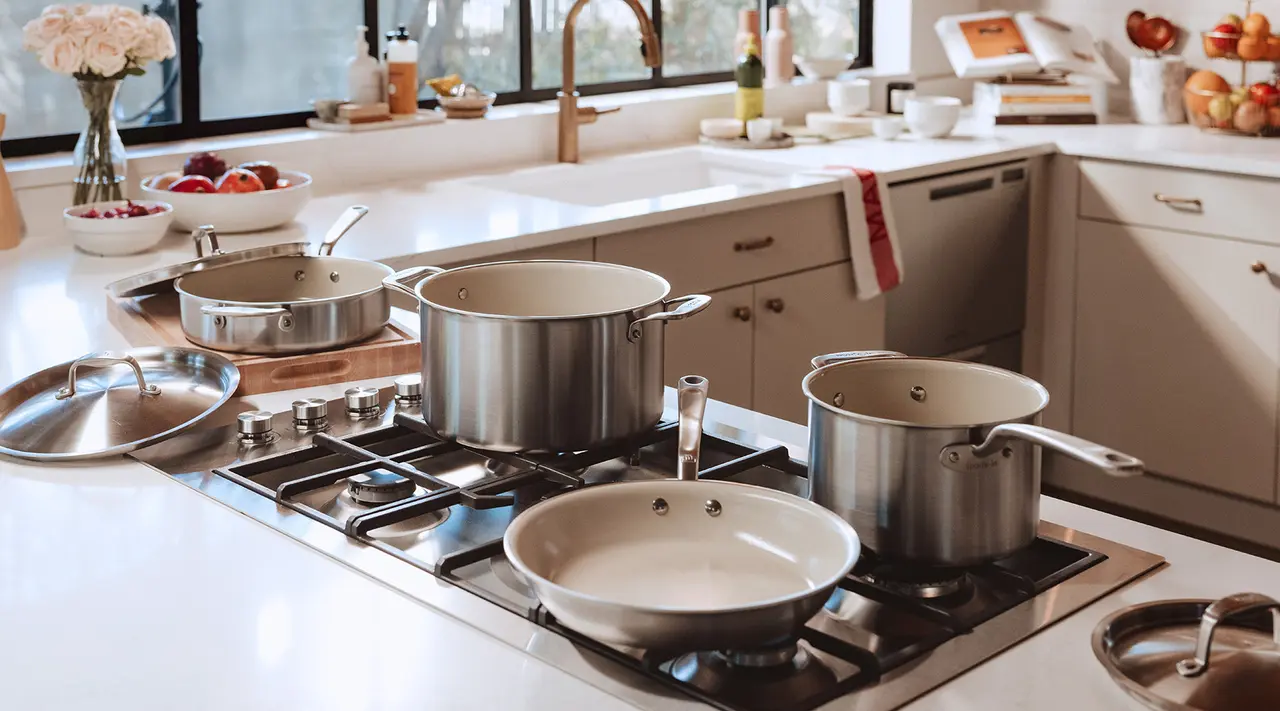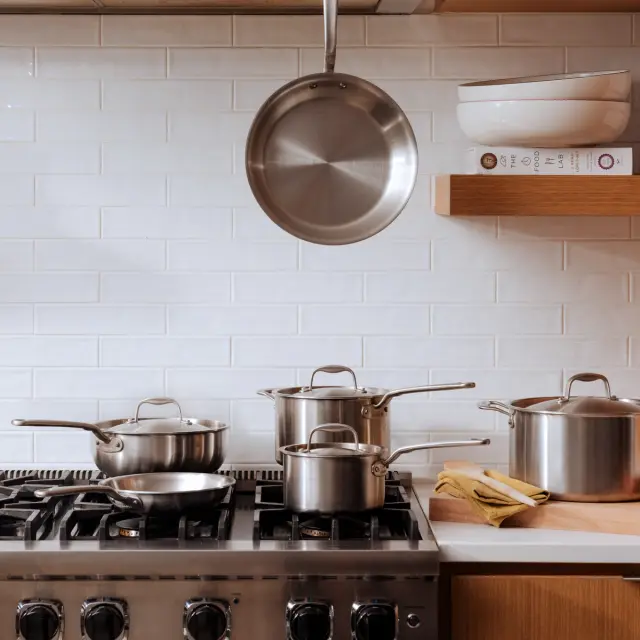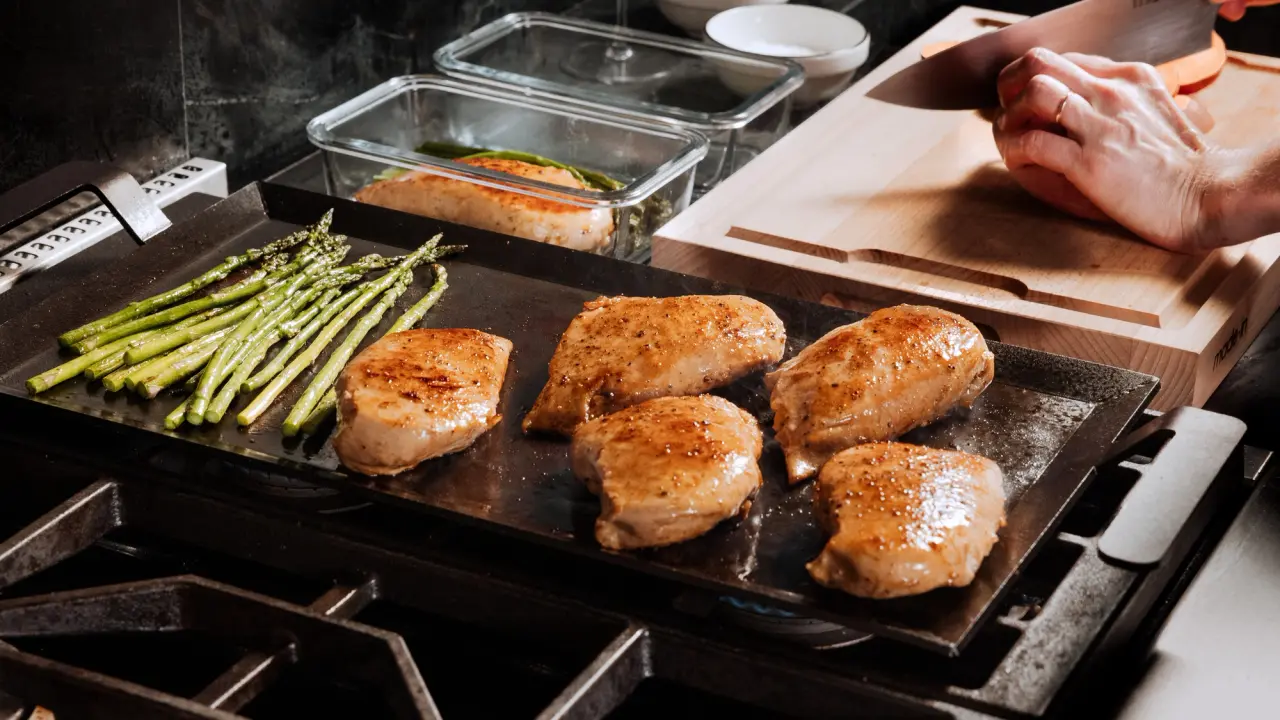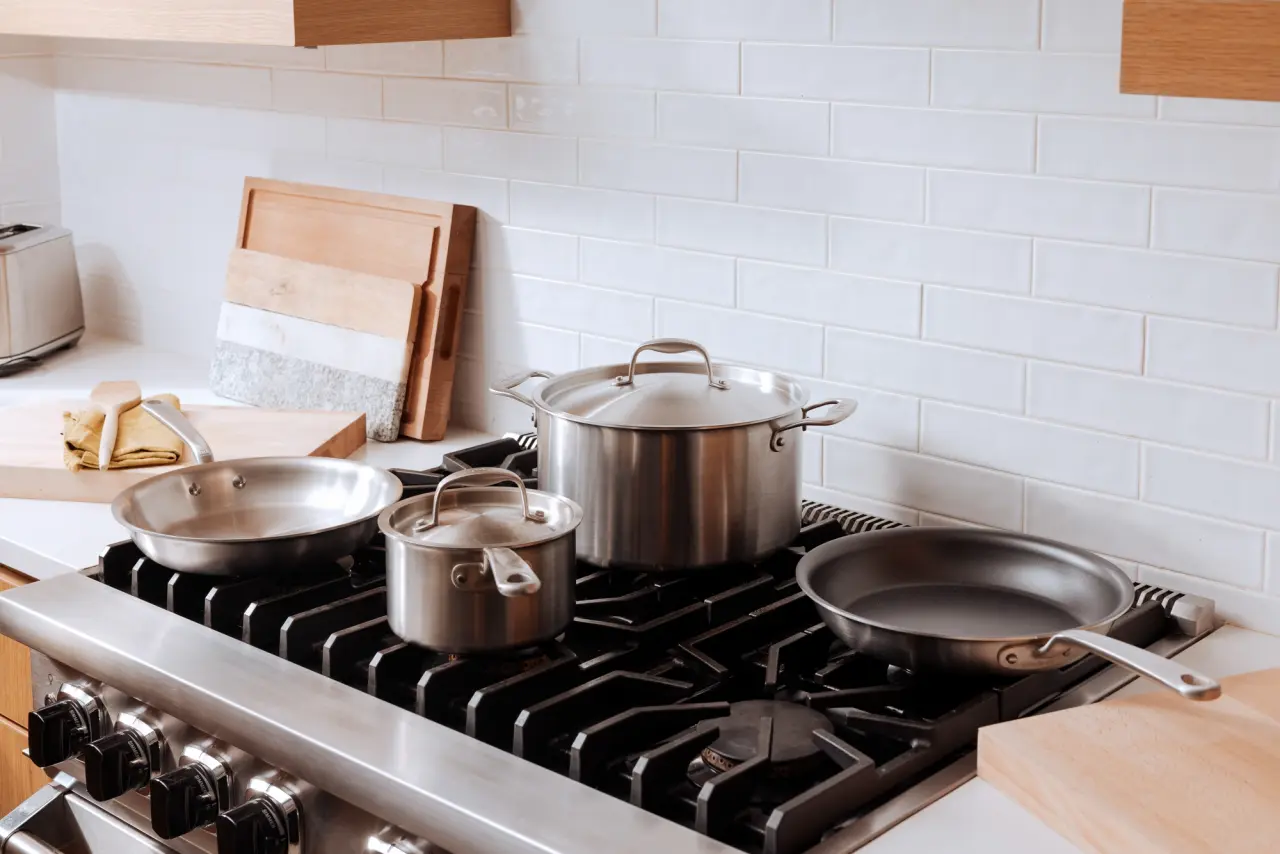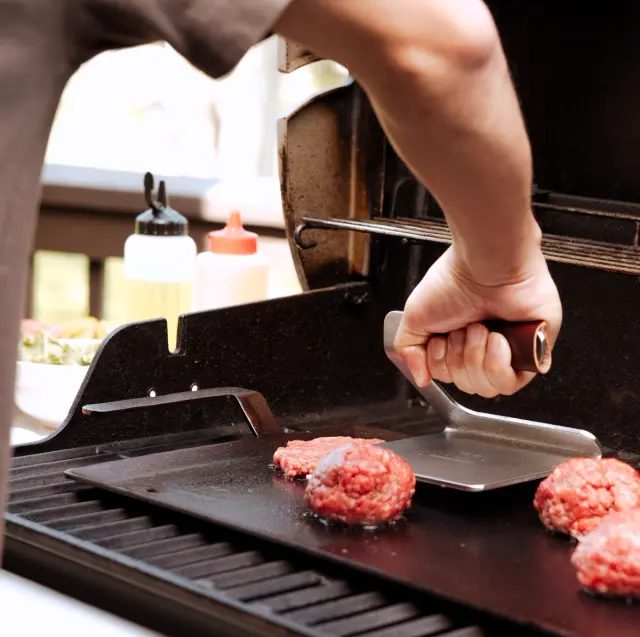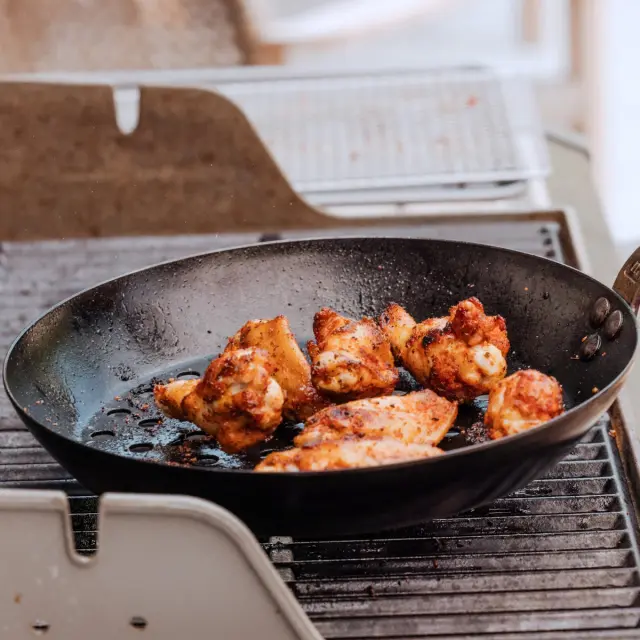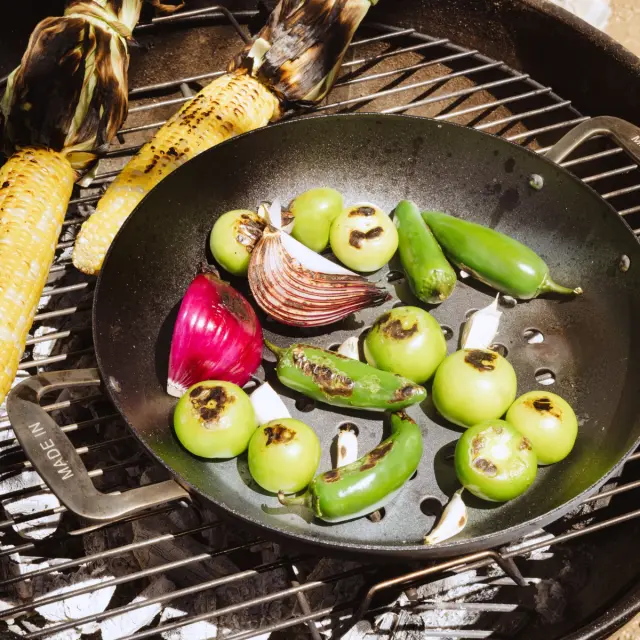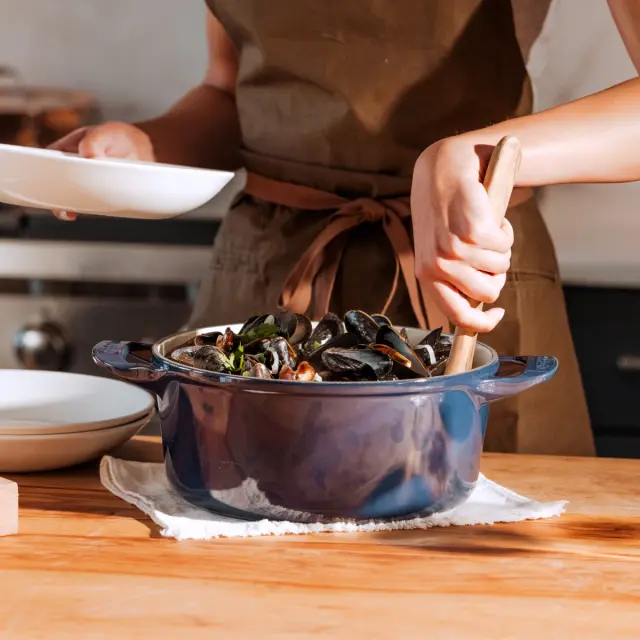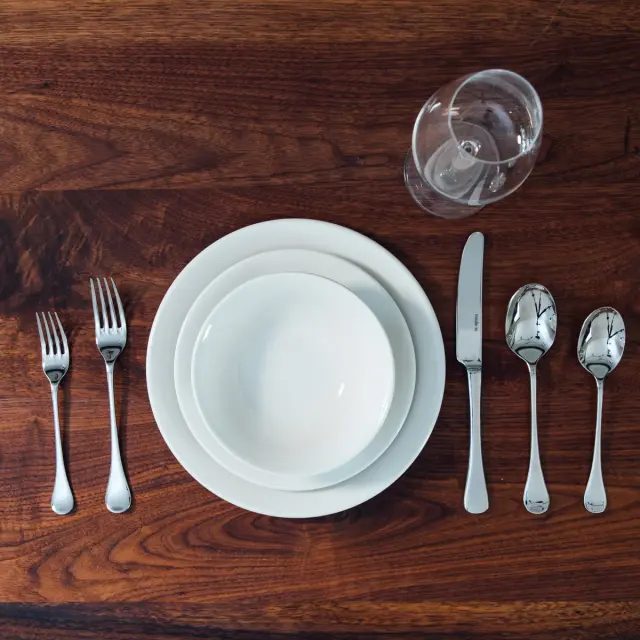It’s hard to ignore the designer colors and sleek, minimalist shapes of ceramic cookware—especially when those ads keep popping up in your Instagram feed (you know the ones). Like with any trendy cookware item, however, it’s reasonable to feel a healthy dose of skepticism. , we wanted to help demystify ceramic cookware like our CeramiClad™ Collection: the advantages, the considerations, and where the name actually comes from.
What Is Ceramic Cookware?
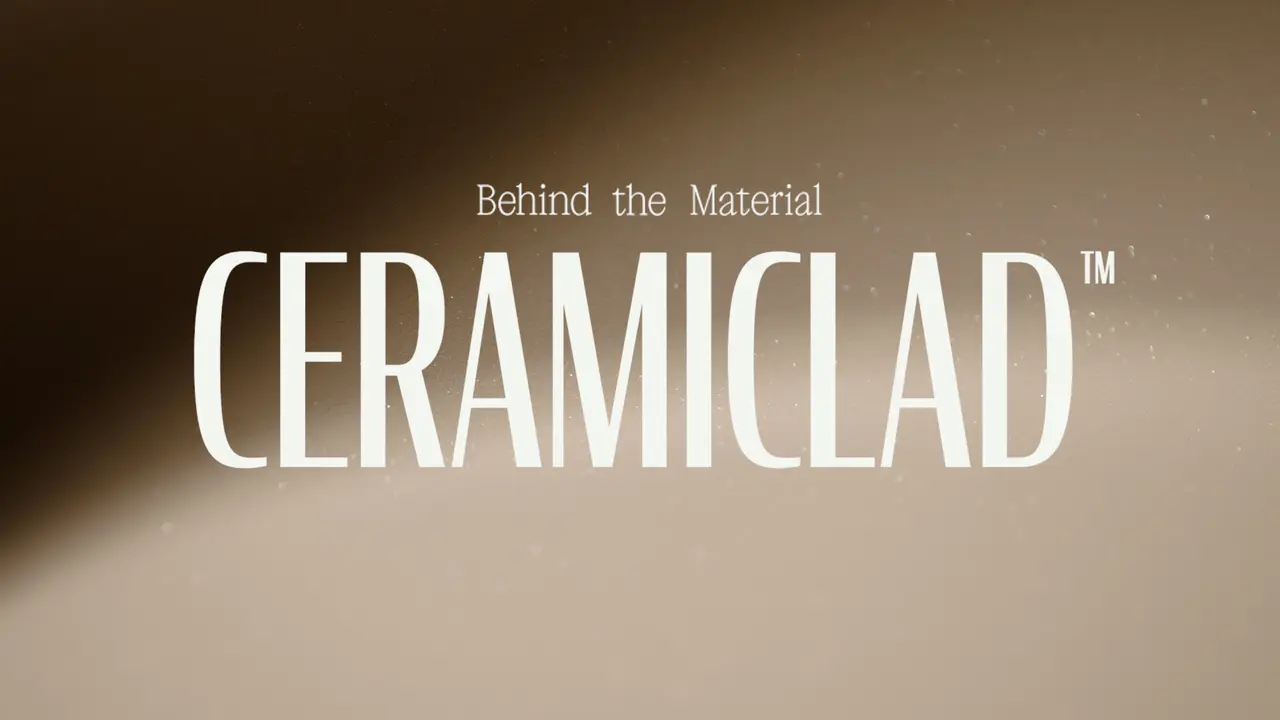
Despite the name, ceramic cookware isn't kiln-fired—rather, the name comes from the coating’s enamel-like appearance. The inside of a ceramic pot or pan is coated with a naturally-derived, water- and oil-resistant coating on top of a metal base (usually stainless steel or aluminum).
Since this coating is—and always has been—made without harmful chemicals like PFAS and heavy metals like lead and cadmium, ceramic cookware is often marketed as a more sustainable alternative to traditionally coated non stick cookware.
What are the Pros of Ceramic Cookware?
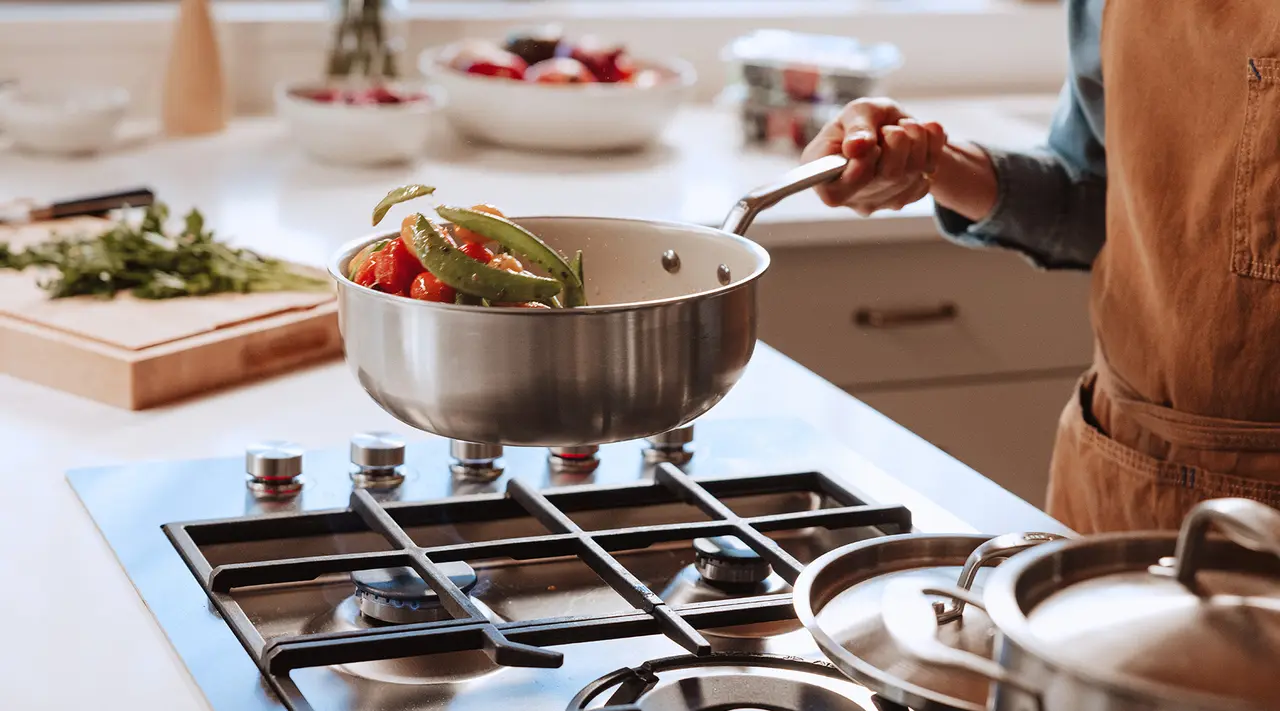
The pros of ceramic cookware are similar to those of the traditional non stick cookware you're familiar with—namely, the smooth non stick finish makes for easier cleanup, and requires less oil or cooking fat to keep things from sticking.
1. No-Stick Coating
The coating on the inside of a ceramic pot or pan functions similarly to that of traditional, coated non stick cookware, providing a frictionless surface for cooking eggs, fish, and other delicate, stick-prone foods. Ceramic cookware is one of our favorite clean cooking solutions and option for those trying to cook with less fat, since you won’t need as much oil or butter to keep food from sticking.
2. Easy to Clean
This one’s pretty straightforward—since food naturally releases more easily from the surface of a ceramic pot or pan, you won’t need to scour or soak your ceramic cookware. To clean ceramic pans, just give it a gentle scrub with dish soap and a soft sponge to remove any debris. The only factors to keep in mind are avoiding abrasive tools like steel wool at all costs—and keeping it far away from the dishwasher.
3. Induction-Compatible
If you’re looking for a pan that’s compatible with an induction cooktop, ceramic cookware is a solid option that's typically compatible across all types of cooktops, from induction to gas to electric, provided it's made of the right materials.
What are the Considerations of Ceramic Cookware?
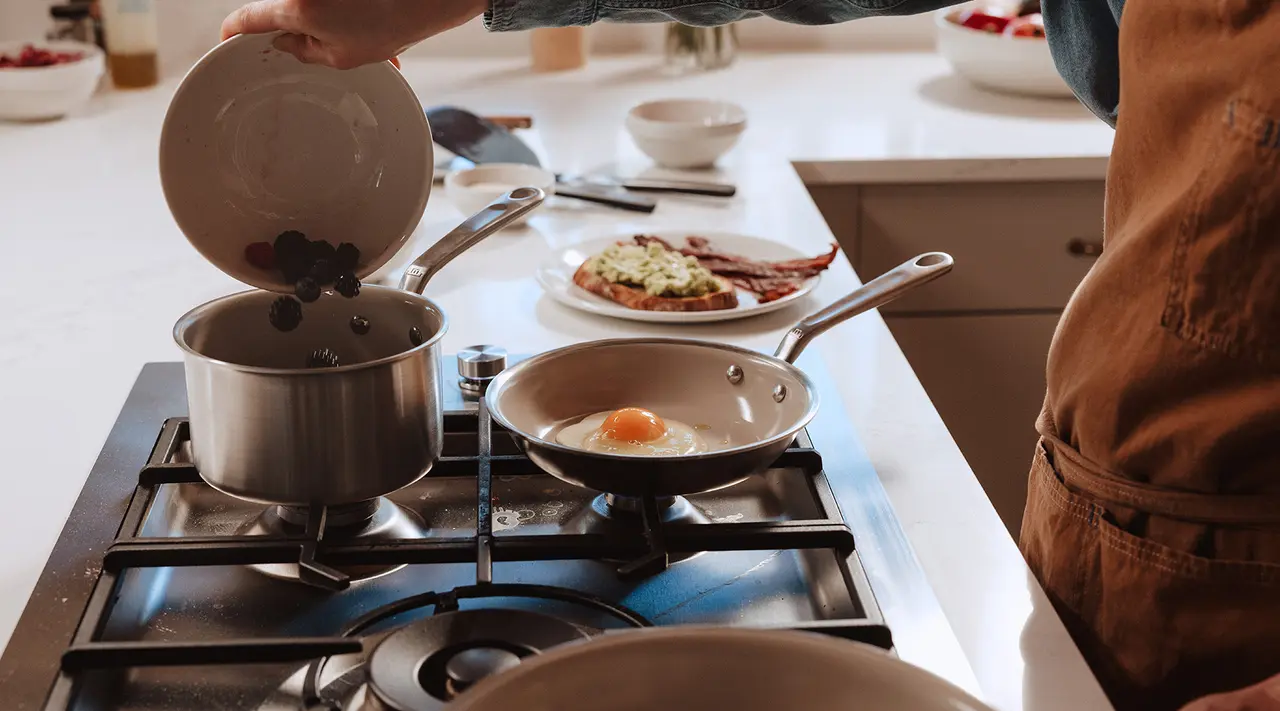
Like other pans, ceramic cookware has a few considerations to keep in mind—namely, it has a shorter lifespan than other options.
1. Differing Quality Options
While you can find high-quality ceramic cookware made of high-quality hard-anodized aluminum or cladded stainless steel—like our CeramiClad™ Collection, made with the same base as our 5-ply Stainless Clad—that’s not always the case: many ceramic pans are made with an aluminum base, which can warp and scratch more easily.
Just like with any cookware, make sure to do a little research before purchasing a ceramic pan to make sure you’re getting something durable and relatively long-lasting.
2. Shorter Lifespan
Even if you manage to carefully source a well-made ceramic pan, your cookware is still only likely to last a couple of years. This is due to the nature of the coating, which naturally releases every time you heat up your pan. Once that coating has worn out, your pan will no longer be non stick—but will still be usable, and can be made relatively non stick once more with the help of cooking fat.
3. Delicate Coating
The coating on a ceramic pot or pan tends to be more fragile than other types of coatings, which means it can be more susceptible to scratches and other forms of wear and tear. This applies to high-heat cooking, as well—some ceramic pans are marketed as safe for high heat cooking, but sustained use over high heat can actually cause the ceramic coating to break down more quickly.
That's why we suggest using our CeramiClad™ with soft, non stick-friendly utensils, like nylon, silicone, or wood, and keeping it under medium on the stovetop.
Ready to Shop?
Like with any piece of cookware, the most important thing is that you feel comfortable and safe using it. And if you still feel unsure about cooking with regular non stick pans, ceramic cookware is a great option with many more pros than considerations.
